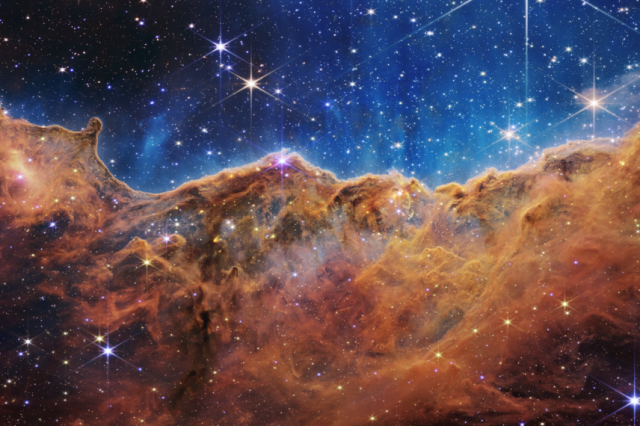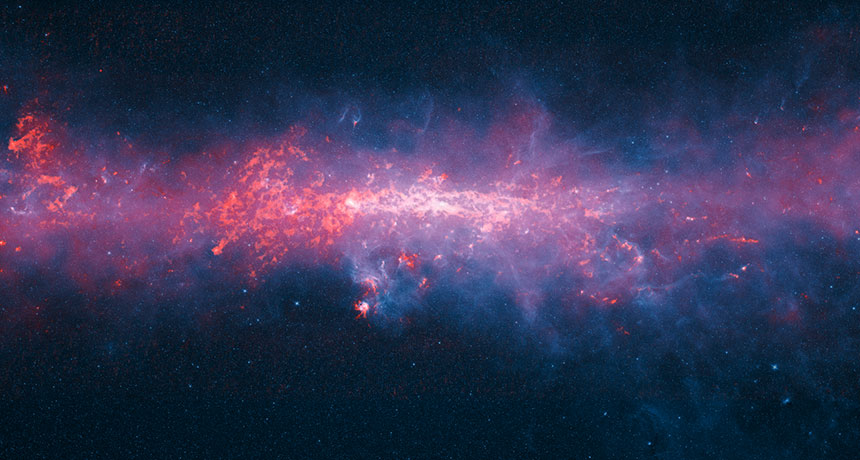A stunning 12-year time-lapse video of the entire sky has been created by NASA, showcasing how the environment around us has changed. The video was created using data collected by the Near-Earth Object Wide-field Infrared Survey Explorer (NEOWISE) satellite telescope, which orbits the Sun every six months and takes pictures in all directions.
The time-lapse video provides a unique opportunity to experience the motion and change of the sky over the past decade. While photographs of the cosmos capture its wonders, moving pictures allow us to better understand and appreciate the dynamic nature of the universe.
NEOWISE is just one of many tools used by NASA to study the cosmos and gain a deeper understanding of the universe we live in. The agency’s ongoing research and exploration efforts continue to push the boundaries of our knowledge and inspire awe and wonder in people around the world.

The time-lapse video created by NASA using data from the NEOWISE satellite telescope contains hundreds of millions of objects, and researchers used 18 all-sky maps to create a movie showing changes over the past ten years. Astronomers can learn a great deal about the universe from each map, but they become even more valuable tools for teaching students about the cosmos when they are seen as a time-lapse.
Time-domain astronomy is a technique that can be used to compare the maps and find far-off objects that have altered in brightness or location over time. According to Amy Mainzer, the University of Arizona’s NEOWISE principal investigator, “the night sky looks to change quite minimally,” but in reality, the sky is filled with stars that are continually exploding and flashing, asteroids passing by, and stars being ripped apart by black holes. The universe is a very dynamic and active place.
The time-lapse video created by NASA provides a unique and valuable perspective on the ever-changing nature of the cosmos. By studying these changes over time, scientists can gain a deeper understanding of the processes that shape the universe and our place within it.

The Wide-field Infrared Survey Explorer (WISE) spacecraft was launched in 2009 with the purpose of searching our galaxy for extrasolar objects and conducting research on them. The NEOWISE project was later initiated to retrieve WISE asteroid detections through data processing.
The spacecraft’s cryogenically cooled detectors were sensitive to infrared light, which is invisible to the human eye. Infrared light is generated by the world’s brightest galaxies and nearby cool stars. When the coolant on board ran out in 2011, the WISE mission came to an end, although the spacecraft and some of its infrared detectors continued to function.
The NEOWISE project has since repurposed the spacecraft to search for and study near-Earth objects, providing valuable insights into the potential hazards and opportunities associated with these objects. The ongoing research and exploration efforts of NASA and its partners continue to push the boundaries of our knowledge and understanding of the universe.

In 2013, NASA modified the NEOWISE spacecraft and its mission to specifically track asteroids and other near-Earth objects. This was done in response to the potential hazards posed by these objects and the need to better understand them. Despite the change, astronomers continue to examine extrasolar objects using information from infrared telescopes.
The NEOWISE mission has been highly successful in identifying and studying near-Earth objects, providing valuable information about their size, composition, and potential hazards. The ongoing work of NEOWISE and other NASA missions is crucial for advancing our understanding of the universe and ensuring the safety and well-being of our planet.
Infrared telescopes, like those used by NEOWISE, are powerful tools for studying the cosmos. By detecting infrared light, these telescopes can see through dust and gas clouds that often obscure objects in visible light. This allows astronomers to study objects that would otherwise be hidden from view and gain new insights into the workings of the universe.
In 2020, a list of objects from 12 NEOWISE all-sky maps was made available as part of the CatWISE project. This collection focuses on brown dwarfs, which are found throughout the cosmos and often hide in the shadows not far from our Sun.
Brown dwarfs do not go through the fusion process that stars do, despite starting out as stars. Due to their proximity to Earth, brown dwarfs appear to move more quickly than farther away stars traveling at the same speed.
By searching the inventory for objects that move amid billions of others, one can locate brown dwarfs. As a companion project to CatWISE, Backyard Worlds: Planet 9 allows citizen scientists to go through NEOWISE data and help identify new objects, including brown dwarfs.
The CatWISE and Backyard Worlds: Planet 9 projects are just two examples of how NASA is engaging the public in the search for new objects and expanding our understanding of the universe. Through these projects, citizen scientists can contribute to cutting-edge research and exploration efforts, making it a more collaborative and inclusive endeavor.

Brown Dwarf Mapping
Using the original two all-sky scans from WISE, around 200 brown dwarfs were discovered within 65 light-years of our Sun. With the new maps, an additional 60 Y-dwarfs, the coldest brown dwarfs, have been detected. Warmer brown dwarfs could provide a different story about how and when they formed than Y-dwarfs.
These discoveries have allowed scientists to create a more complete census of brown dwarfs close to the Sun, which can help calculate how efficient star creation is in our galaxy. Understanding the processes that shape the formation and evolution of stars is crucial to gaining a deeper understanding of the universe as a whole.
Over a decade of studying the sky, NEOWISE has helped scientists comprehend how stars emerge from dusty blankets that shroud protostars as they evolve into stars. This has provided valuable insights into the early stages of star formation and allowed scientists to look inside the obscuring cocoons that surround these objects.
Overall, the NEOWISE mission has been a valuable tool for studying and understanding the cosmos, providing new insights into the formation and evolution of stars, as well as the detection and study of near-Earth objects. Continued research and exploration efforts are crucial for advancing our knowledge and understanding of the universe.

Protostars flicker and flare as a result of the accumulation of mass in the dust clouds that surround them throughout time. Astronomers use NEOWISE to follow the lifecycles of roughly 1,000 protostars over time to better understand how stars form. This has provided valuable insights into the early stages of star formation and allowed scientists to better understand the processes that shape the universe.
In addition to studying protostars, NEOWISE data has also contributed to a better understanding of black holes. Millions of supermassive black holes were found at the centers of far-off galaxies as part of the original WISE survey. More recently, the size of hot gas discs encircling distant black holes was measured using NEOWISE data and an echo mapping method. This has provided valuable insights into the behavior and properties of black holes, which remain some of the most mysterious and intriguing objects in the universe.
Overall, the NEOWISE mission has contributed to a better understanding of the cosmos and our place within it. Through ongoing research and exploration efforts, scientists and researchers continue to push the boundaries of our knowledge and understanding of the universe.

Indeed, NEOWISE has greatly advanced our knowledge of the solar system, nearby stars, and even far-off, unobserved objects like supermassive black holes. Many of the objects studied by NEOWISE are too small or too distant to be visible with a telescope, highlighting the power of infrared technology and the importance of ongoing research and exploration efforts.
By studying these objects and their properties, scientists can gain a deeper understanding of the processes that shape the universe and our place within it. This information can also be used to better understand potential hazards, such as near-Earth objects, and develop strategies for mitigating their impact.
Overall, the NEOWISE mission has been a valuable tool for advancing our knowledge of the cosmos and expanding our understanding of the universe. Continued research and exploration efforts will be crucial for building on this work and uncovering new insights into the workings of the universe.
Source: news.sci-nature.com









